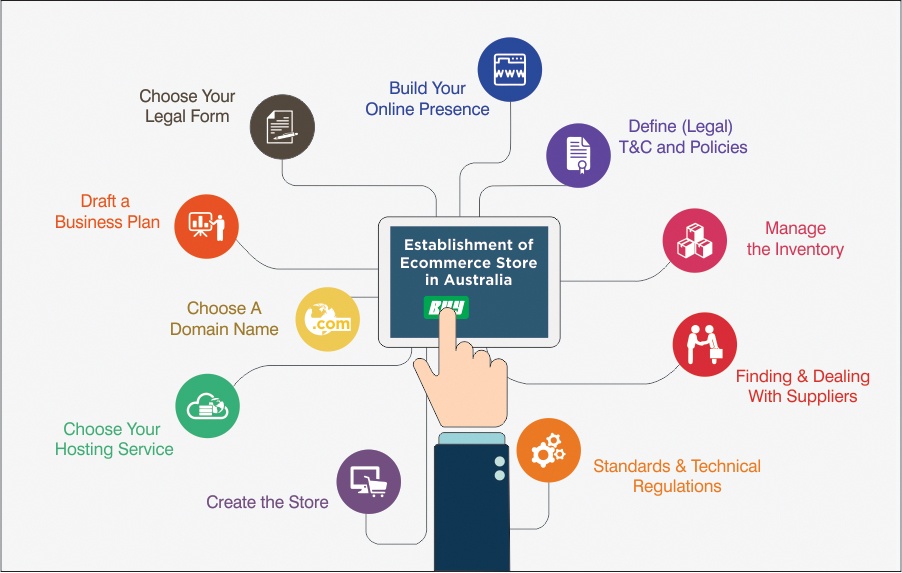Introduction: In today’s digital age, establishing an e-commerce store has become essential for businesses looking to reach a global audience, expand their market presence, and increase revenue. Setting up an e-commerce store involves careful planning, strategic decision-making, and implementation of various technical and operational elements. In this extensive guide, we will provide a step-by-step overview of the process involved in setting up an e-commerce store, covering everything from conceptualization to launch.
Section 1: Understanding E-commerce 1.1 Definition and Importance: E-commerce, or electronic commerce, refers to the buying and selling of goods and services online. E-commerce stores enable businesses to reach customers worldwide, offer convenience, and provide a seamless shopping experience.
1.2 Types of E-commerce Models: Explore different e-commerce business models, including:
- Business-to-Consumer (B2C)
- Business-to-Business (B2B)
- Consumer-to-Consumer (C2C)
- Consumer-to-Business (C2B)
- Omnichannel Retailing
Section 2: Planning Your E-commerce Store 2.1 Market Research: Conduct market research to identify your target audience, competitors, and market trends. Analyze consumer behavior, preferences, and purchasing habits to inform your e-commerce strategy.
2.2 Define Your Products or Services: Clarify the products or services you will offer through your e-commerce store. Determine your product range, pricing strategy, and unique selling propositions (USPs) to differentiate your offerings in the market.
Section 3: Choosing the Right E-commerce Platform 3.1 Platform Selection Criteria: Evaluate different e-commerce platforms based on factors such as:
- Features and functionality
- Scalability and flexibility
- Customization options
- Integration capabilities
- Pricing and fees
3.2 Popular E-commerce Platforms: Explore popular e-commerce platforms, including:
- Shopify
- WooCommerce (WordPress)
- Magento
- BigCommerce
- Squarespace
Section 4: Setting Up Your E-commerce Store 4.1 Domain Name and Hosting: Register a domain name that reflects your brand identity and is easy to remember. Choose a reliable web hosting provider that offers security, performance, and scalability for your e-commerce store.
4.2 Design and Customization: Customize your e-commerce store’s design and layout to align with your brand identity and provide a seamless user experience. Use responsive design principles to ensure compatibility across devices and screen sizes.
Section 5: Adding Products and Content 5.1 Product Catalog Management: Upload product images, descriptions, prices, and attributes to create a comprehensive product catalog. Organize products into categories and subcategories for easy navigation and search.
5.2 Content Creation: Create engaging and informative content for your e-commerce store, including product descriptions, blog posts, and multimedia content. Optimize content for search engines (SEO) to improve visibility and attract organic traffic.
Section 6: Integrating Payment Gateways and Shipping Options 6.1 Payment Gateways: Integrate secure payment gateways that support multiple payment methods, including credit cards, debit cards, digital wallets, and alternative payment options. Ensure compliance with PCI-DSS standards to protect customer payment information.
6.2 Shipping and Fulfillment: Set up shipping options, rates, and fulfillment processes for orders placed through your e-commerce store. Offer flexible shipping methods, including standard, expedited, and international shipping, to meet customer preferences.
Section 7: Implementing Security Measures 7.1 SSL Certificate: Install an SSL (Secure Sockets Layer) certificate to encrypt data transmitted between your e-commerce store and customers’ browsers. SSL encryption protects sensitive information, such as payment details and personal data, from unauthorized access.
7.2 Security Best Practices: Implement security best practices to safeguard your e-commerce store against cyber threats and vulnerabilities. Regularly update software, use strong passwords, and monitor for suspicious activity to prevent data breaches and fraud.
Section 8: Launching Your E-commerce Store 8.1 Testing and Quality Assurance: Conduct thorough testing of your e-commerce store’s functionality, usability, and performance before launch. Test navigation, checkout process, payment gateways, and compatibility across different devices and browsers.
8.2 Soft Launch and Feedback: Soft launch your e-commerce store to a limited audience or beta testers to gather feedback and identify any issues or areas for improvement. Incorporate feedback and make necessary adjustments before the official launch.
Section 9: Marketing and Promotion 9.1 Digital Marketing Strategies: Develop digital marketing strategies to promote your e-commerce store and attract visitors. Utilize search engine optimization (SEO), social media marketing, email marketing, content marketing, and paid advertising to drive traffic and generate sales.
9.2 Customer Acquisition and Retention: Implement customer acquisition and retention strategies to build brand awareness, acquire new customers, and foster loyalty. Offer promotions, discounts, loyalty programs, and personalized recommendations to incentivize purchases and encourage repeat business.
Section 10: Monitoring and Optimization 10.1 Analytics and Reporting: Utilize web analytics tools to track key metrics, such as website traffic, conversion rates, sales performance, and customer behavior. Analyze data insights to identify trends, optimize strategies, and make data-driven decisions.
10.2 Continuous Improvement: Continuously monitor and optimize your e-commerce store based on performance data and customer feedback. Test different strategies, experiment with new features, and stay informed about industry trends to stay competitive in the e-commerce market.
Conclusion: Setting up an e-commerce store is a complex and multifaceted process that requires careful planning, execution, and ongoing optimization. By following the steps outlined in this guide and leveraging best practices, you can create a successful e-commerce store that attracts customers, drives sales, and achieves your business goals. Remember to stay adaptable, responsive to customer needs, and committed to delivering an exceptional online shopping experience to maintain long-term success in the e-commerce industry.
